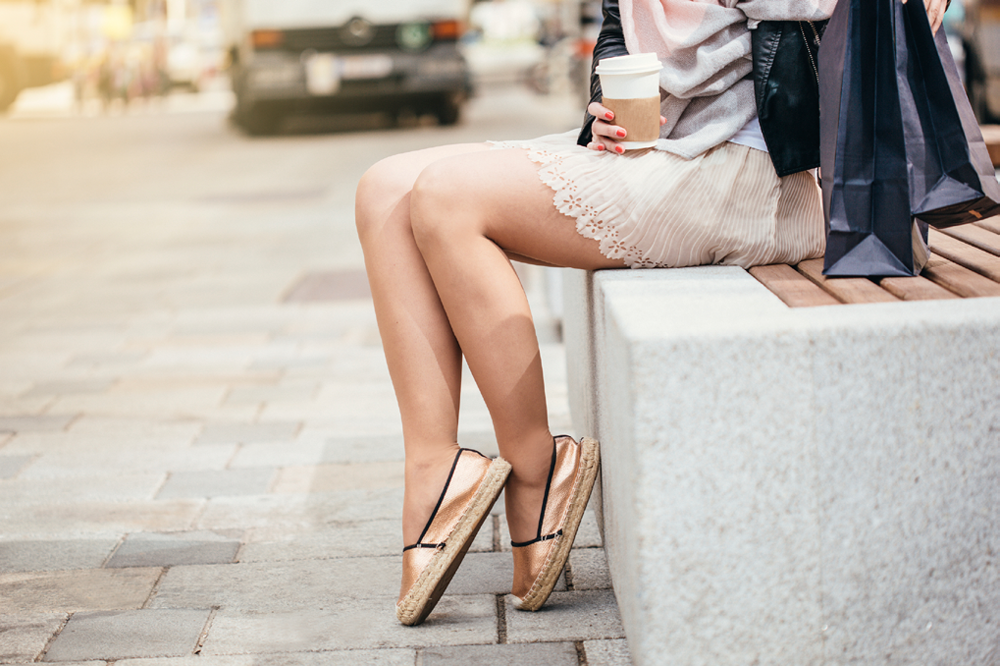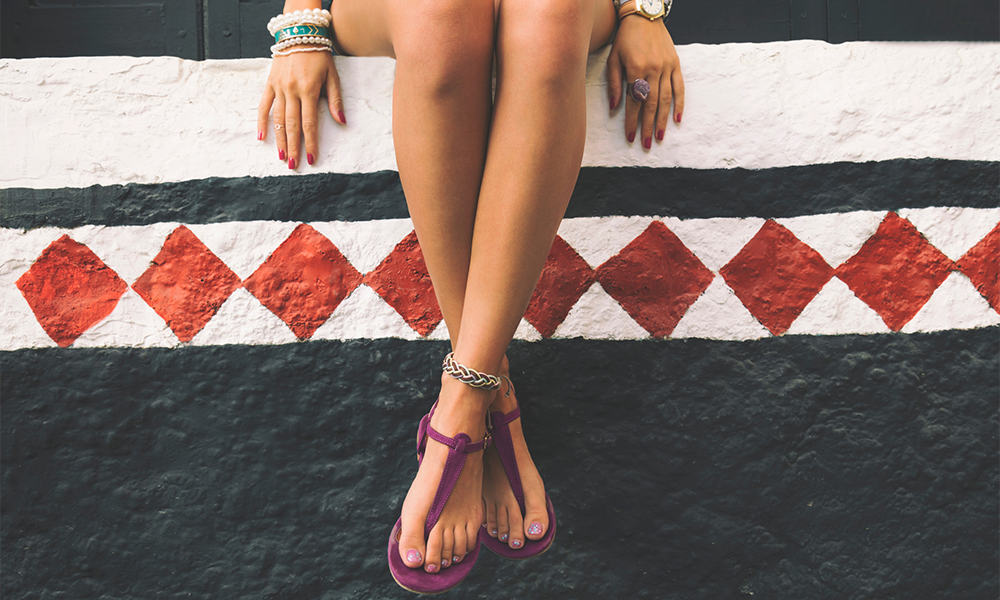Fashion magazines do a great job teaching women how to dress for their body types, but rarely do men and women get education on how to dress for their foot type. And that's a shame, because knowing the particular shape of your feet (whether you have flat feet, high arches, etc.) before you buy shoes can actually make you feel better than knowing whether or not that dress you’re eyeing will flatter a pear body shape.
Why Knowing Your Foot Type Is So Important
The Wall Street Journal reports that more than half of women and a third of men are wearing shoes that don’t fit. And while sporting ill-fitting shoes might not seem like much of a big deal, it can affect you in serious ways beyond just causing some discomfort and foot aches. In fact, even mildly ill-fitting shoes can cause the following health issues over a period of time:

- Knee and back pain
- Bunions
- Hammertoes
- Plantar fasciitis
- Calluses, corns and blisters
- Reduced circulation
- Ingrown toenails
- Achilles tendon deformities
Some of these issues can actually become permanent problems, which is why knowing your foot type — and therefore knowing which shoes are best for you — is so important.
The 4 Foot Types And How To Find Yours
There are four main foot types, and each can tell you which type of shoes will bring you the most comfort and be better for your body over time. A quick visit to a podiatrist is the best way to find out which foot type you have, but it’s easy to get a rough idea at home, as well. To find out which category you belong in, simply wet your foot and step on dry pavement or on a piece of paper laid out on a flat surface. Observe your footprint to see which of the following four foot types it most resembles:
- Neutral foot: Your big toe, ball of foot and heel are all represented in equal measure and resemble what some would say a “typical” footprint; you see only a small part of the middle of your foot, where the arch is located
- Flat foot (low arch): You see most if not all of your foot in your footprint, including the middle part called the arch of the foot.
- Pes cavus (high arch): Only your toes and a small part of your heel and a small part of the ball of your foot are visible in your footprint.
- Supinated foot: Your footprint makes a C-shape, with the outside of your foot being most represented. Podiatrists call this type of walking under pronation.
The Best Shoes For Each Foot Type
Once you’ve figured out your foot shape, here’s what to keep in mind when shoe shopping.
Neutral foot: This is the ideal foot type and signifies that the arches in your feet aren’t too high or too low. People with a neutral foot type can wear almost all types of shoes, provided they are comfortable. It’s important to keep in mind that wearing ill-fitting shoes that cause pain or discomfort can lead to foot arch issues over time.

Flat foot: Contrary to what you might think, having a flat foot doesn’t mean you should wear flat shoes. In fact, flat footed people actually feel more comfortable when wearing low, 1 to 2-inch heels that offer added support to stressed arches than wearing flats and ballerina shoes. However, you can wear flats if you add supple, arch supporting orthotics.
READ MORE: How To Shop For High Heels
Pes cavus: People with a high arch foot type should avoid wearing heels of any kind, as the foot shape not only reduces stability but also can be made worse by high heels. Fabulous arch support is a must to decrease the pressure on the heels and balls of the feet, so opt for cushioned athletic shoes or flats with orthotics.
Supinated: This foot type signifies that you put a lot of weight on the outside of your feet. This means the best shoes for you include those with sturdy sides and heel cups to help keep your weight more evenly balanced. Try to avoid flimsy flip flops and sandals and instead go with well-made sport shoes and other supportive footwear.
Need more shoe advice? Here are a couple of interesting facts: Cushioned running shoes may increase injuries, meaning less cushioned running shoes may be the healthier option. Meanwhile, walking barefoot has the ability to give back pain relief, so you may want to try kicking off your shoes if you suffer from back issues.


